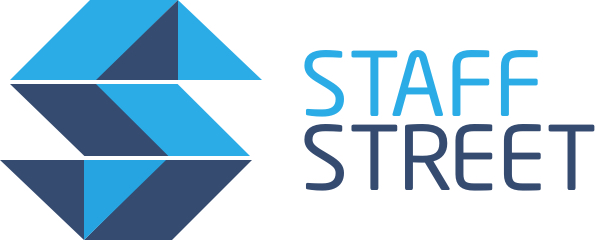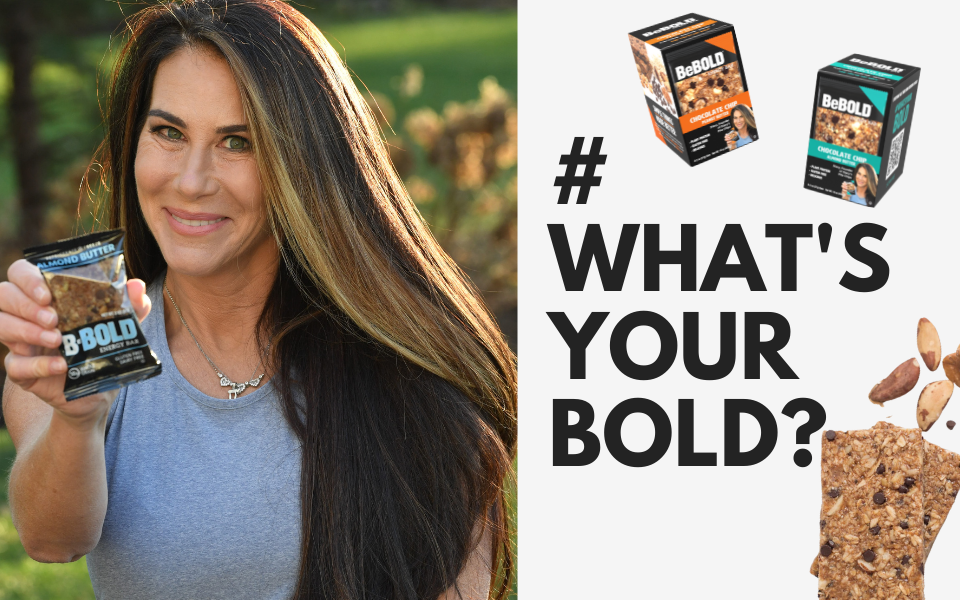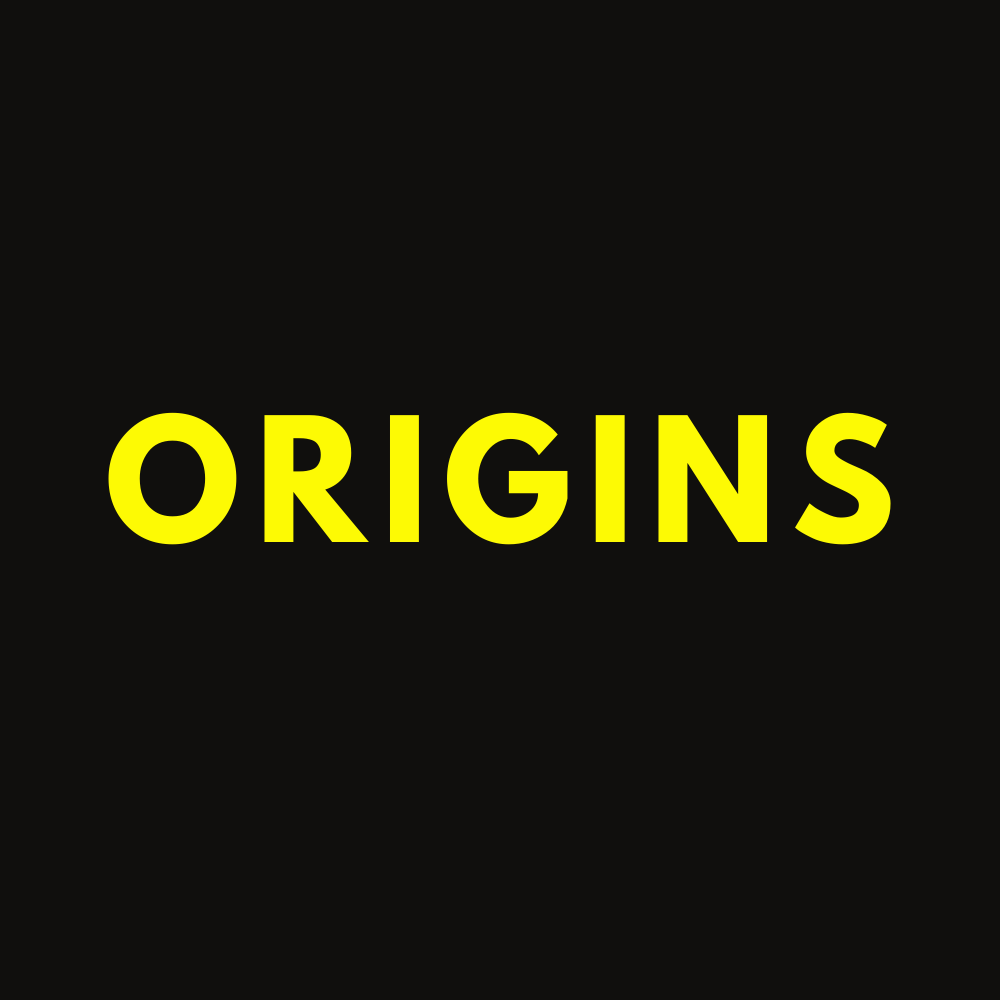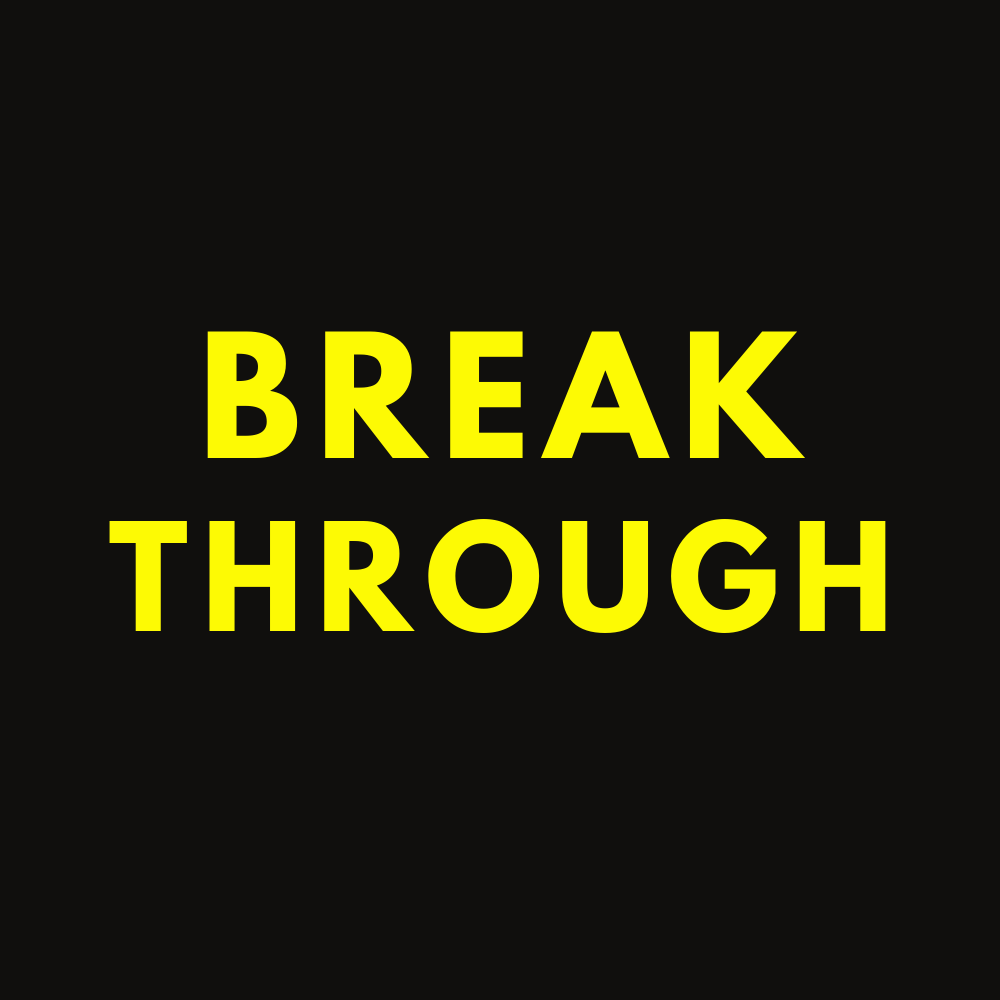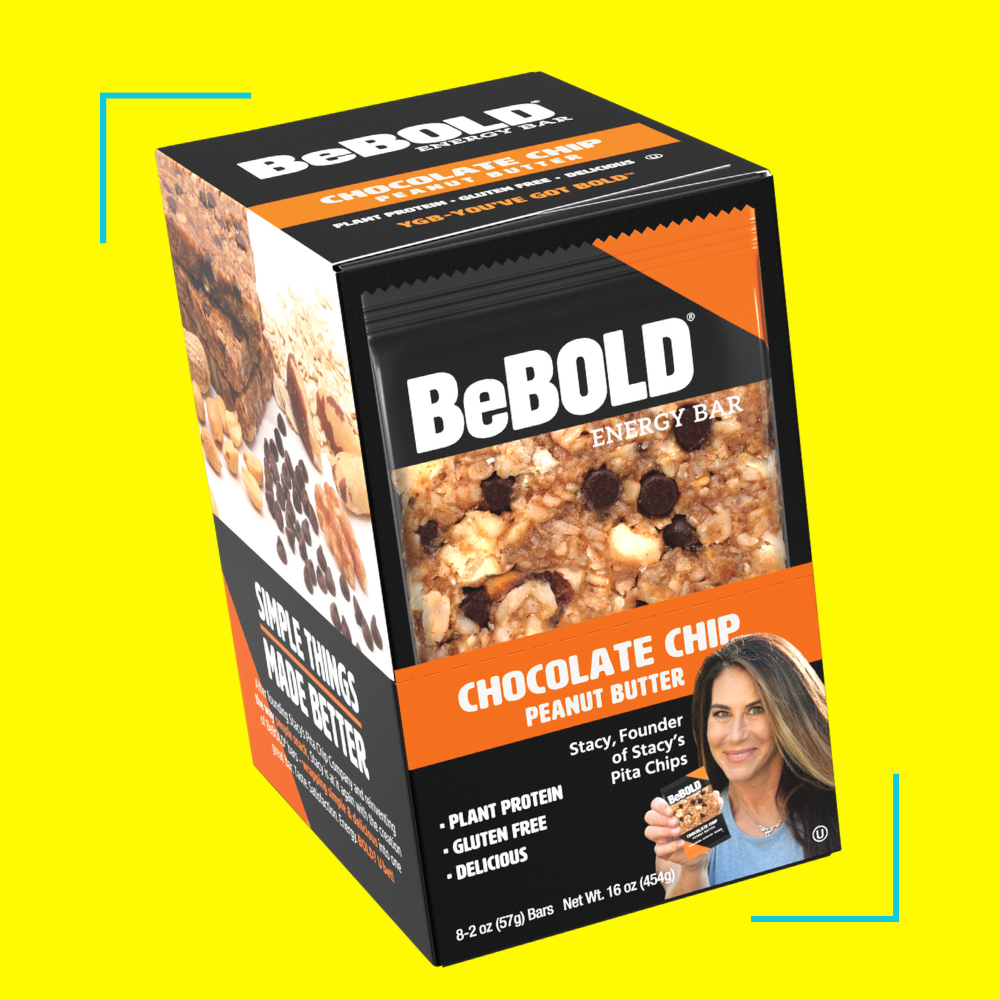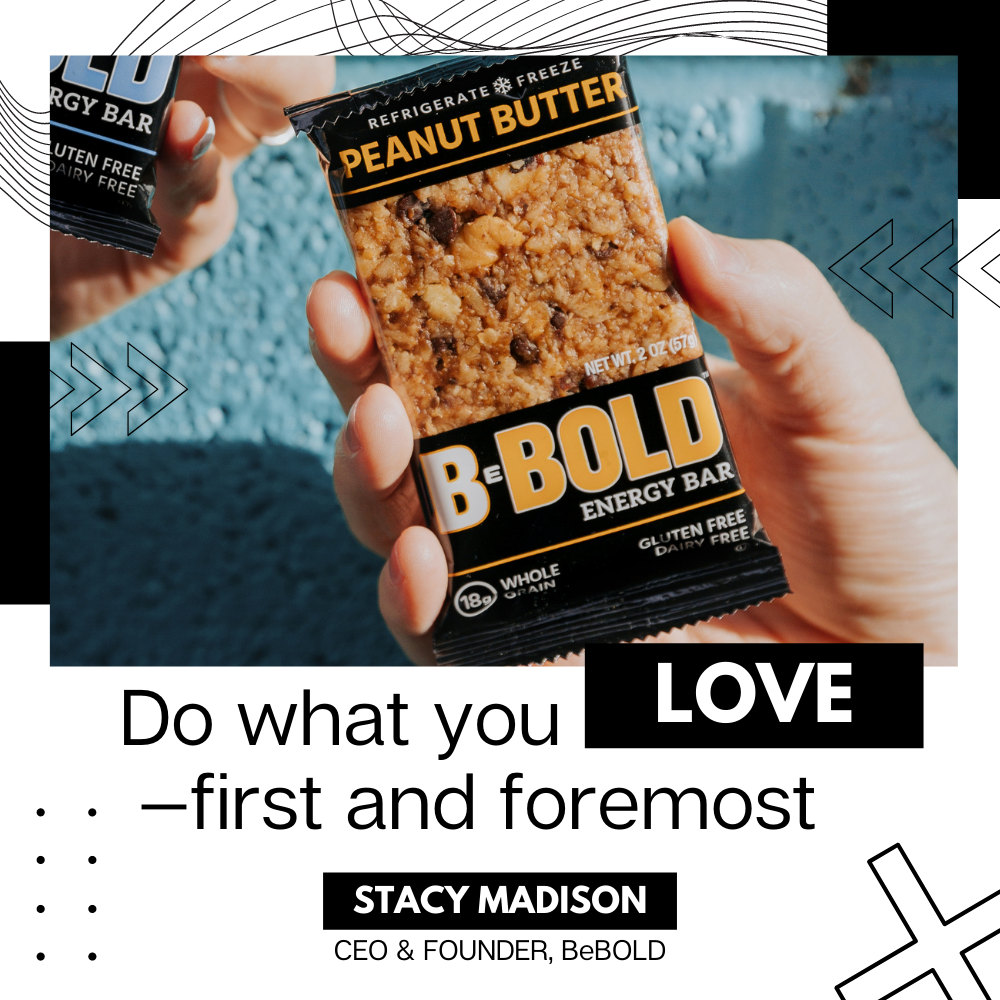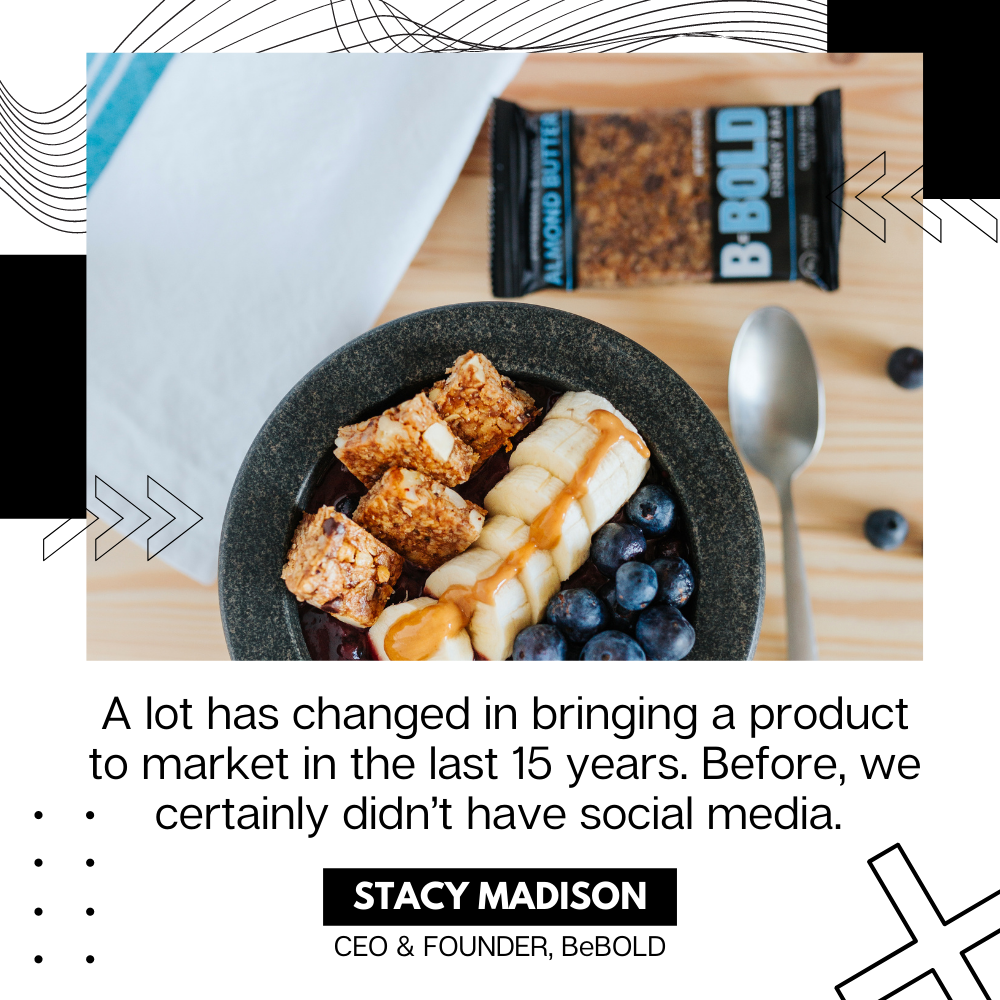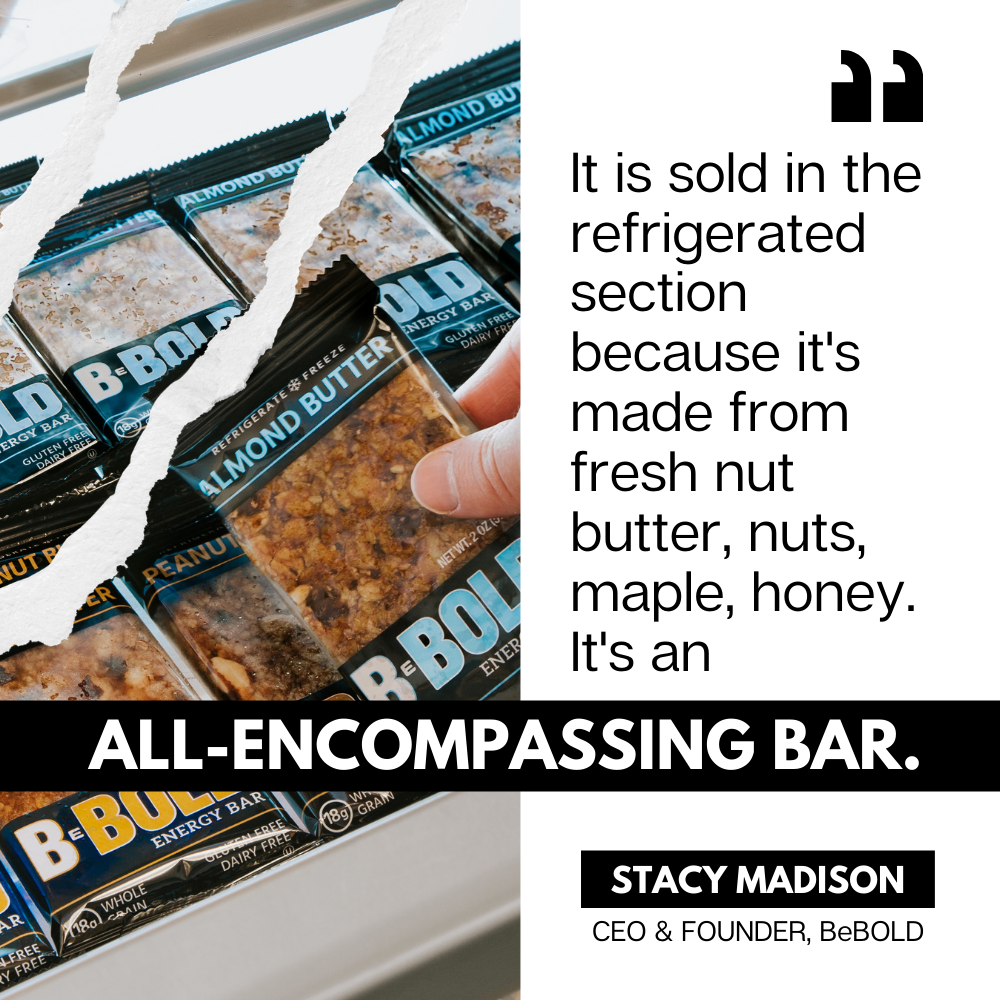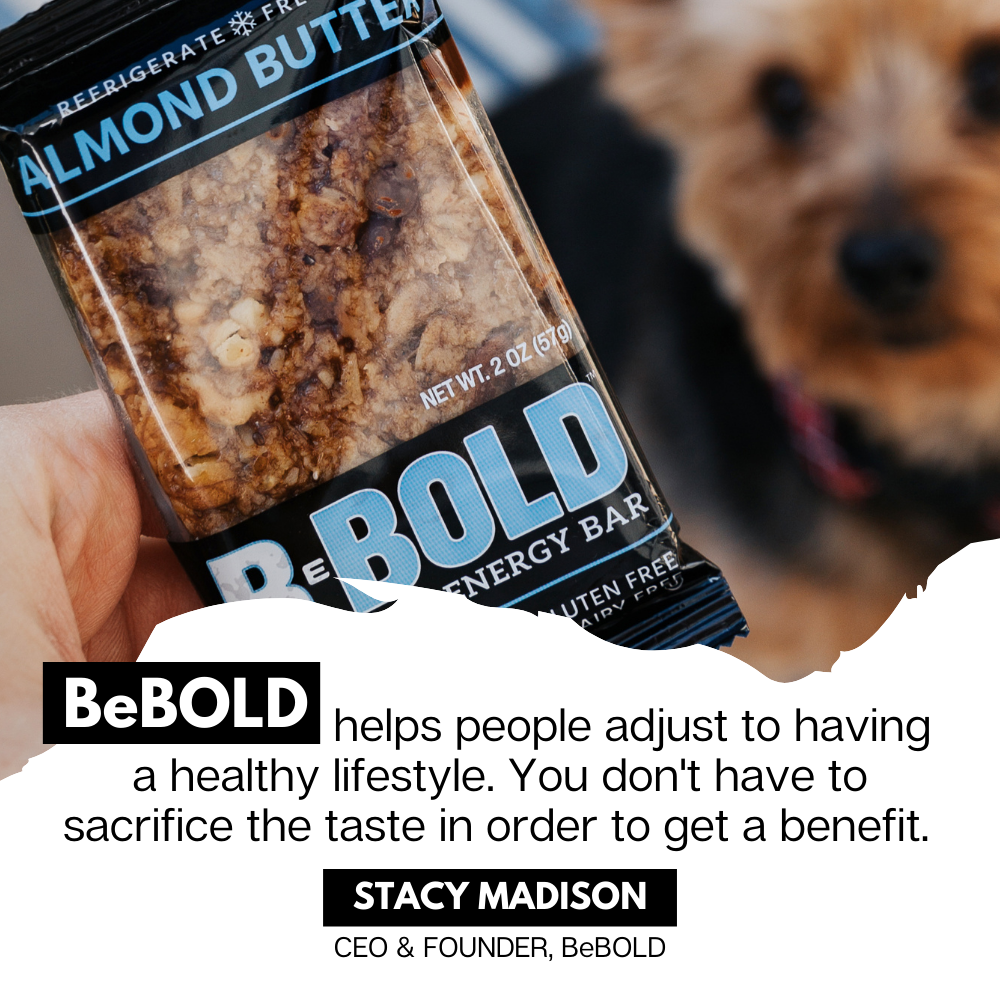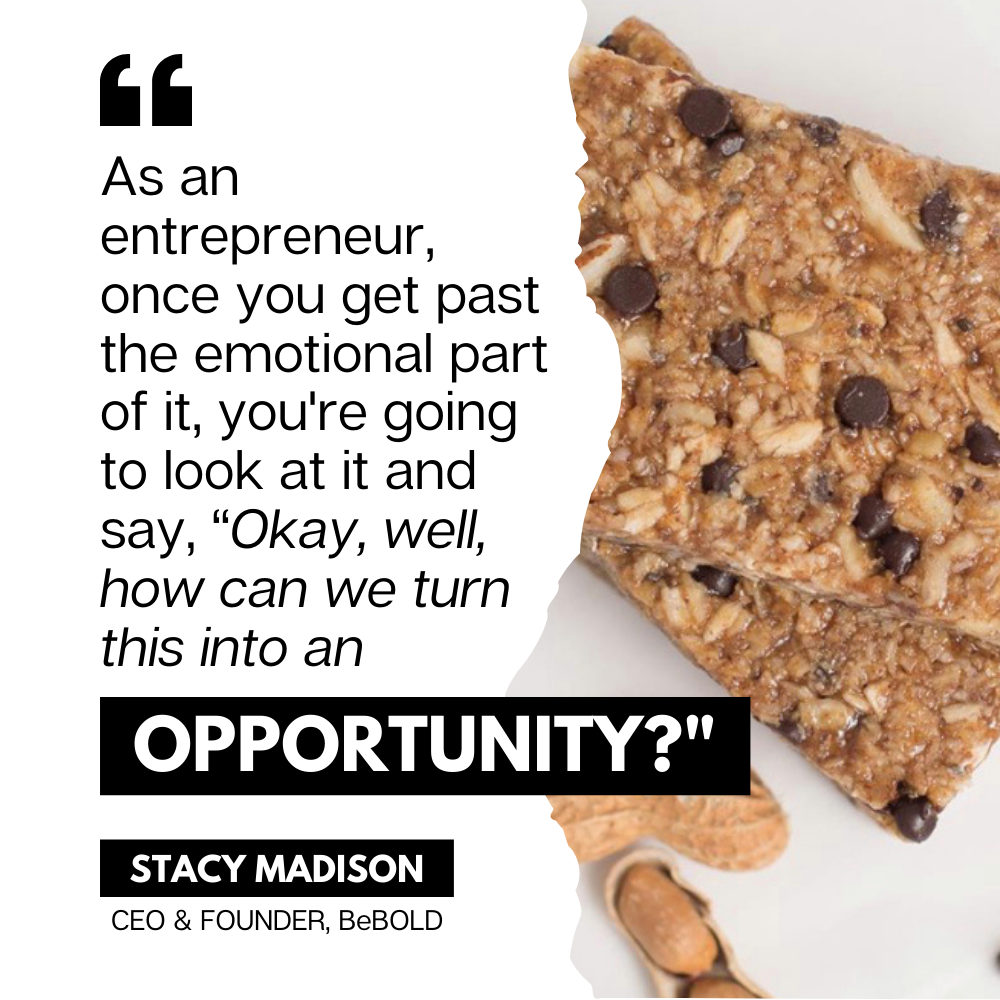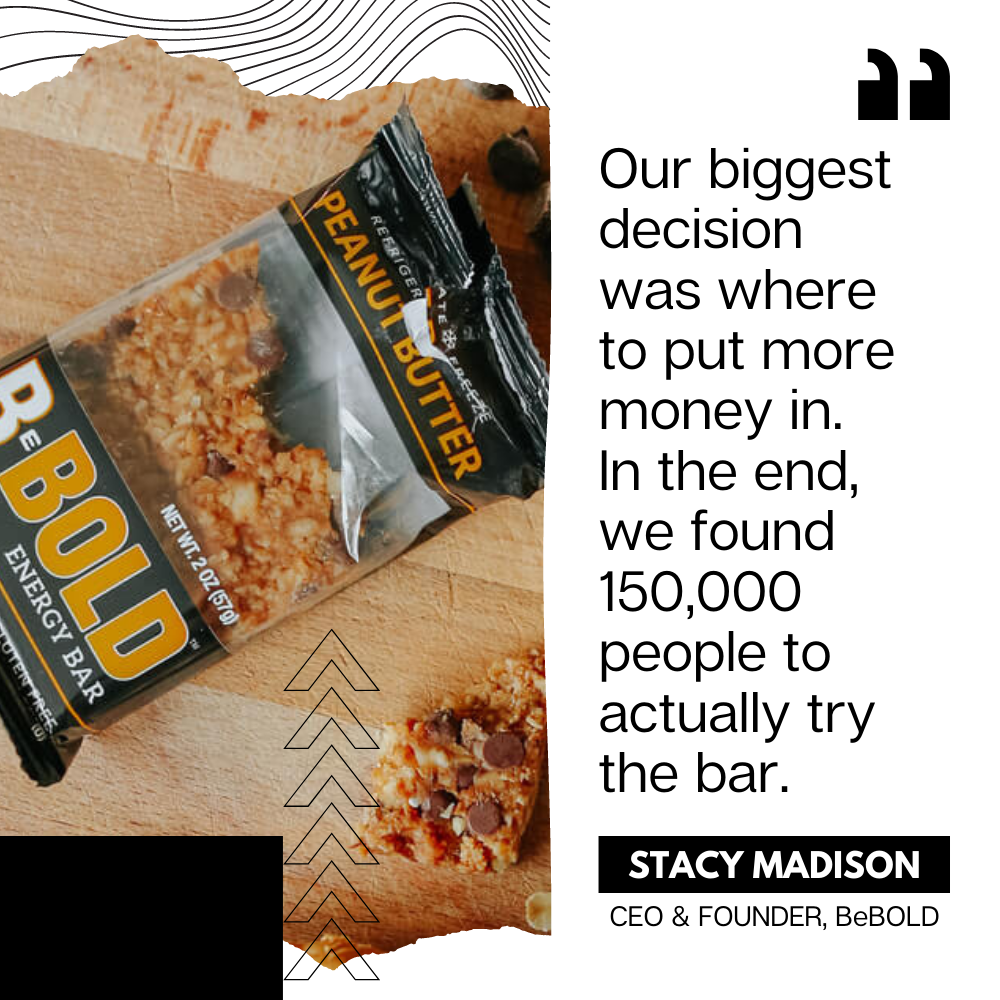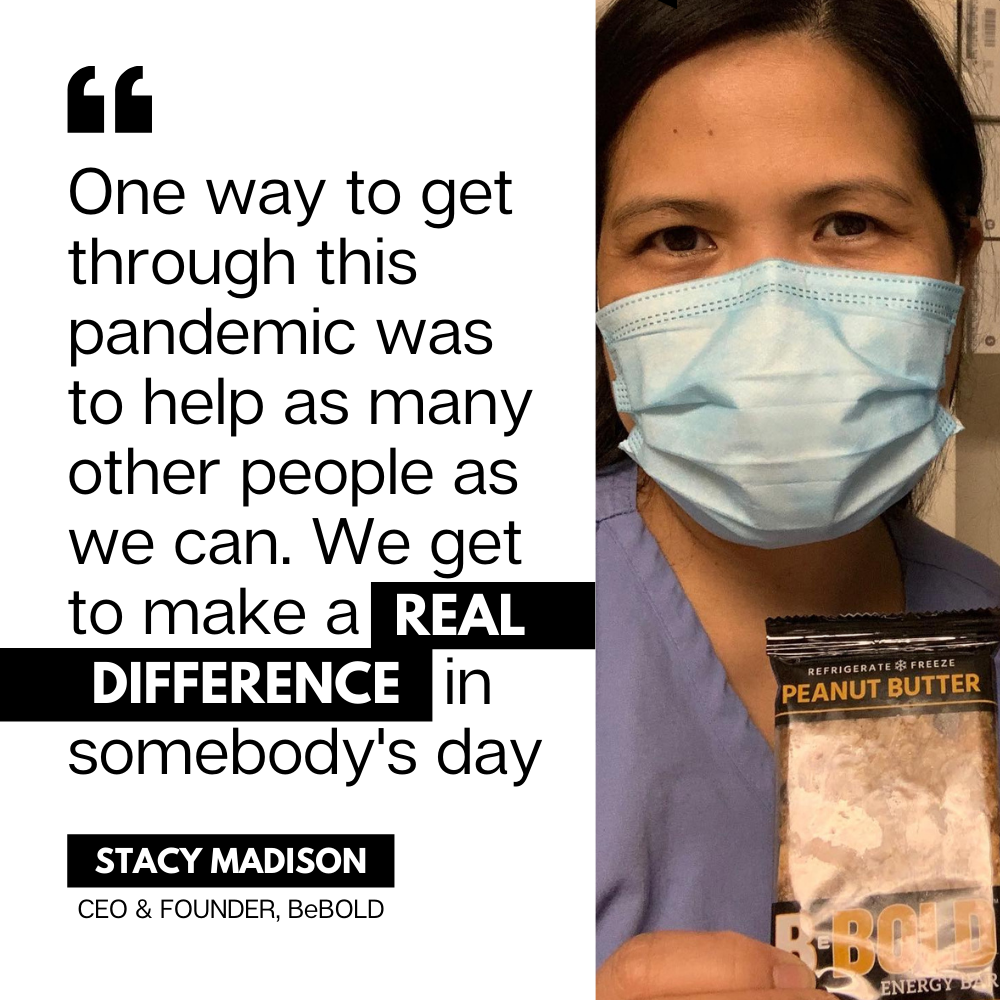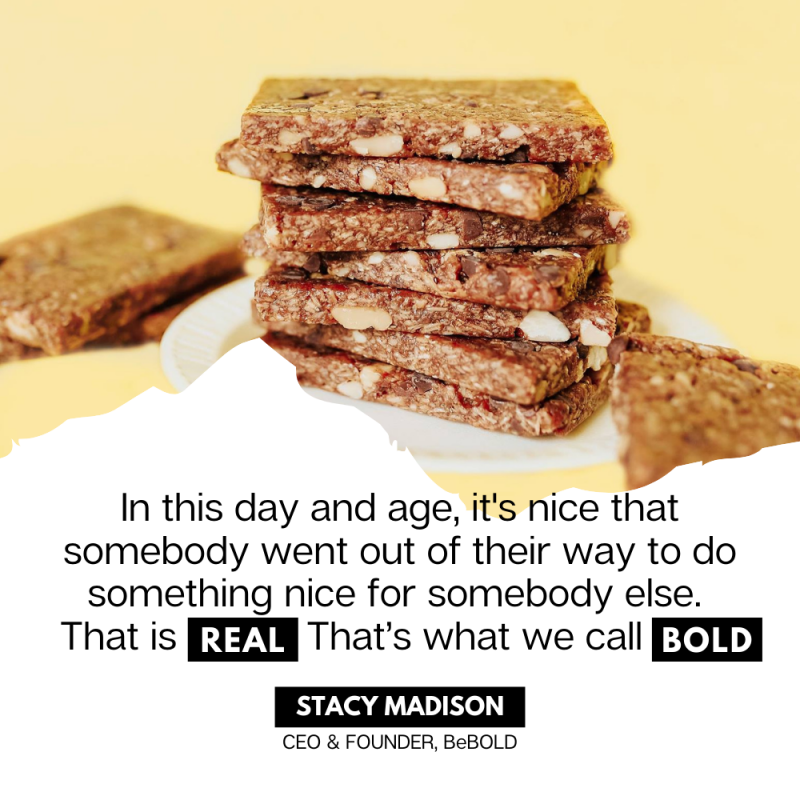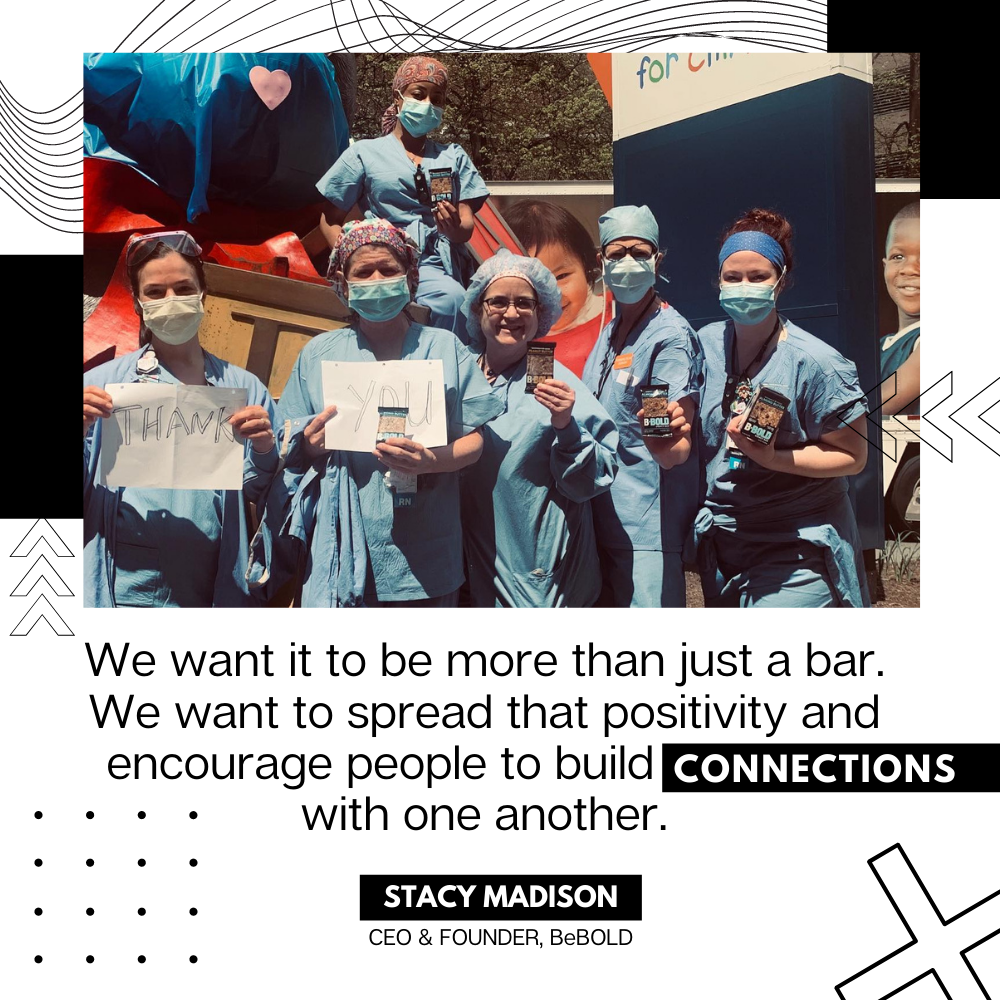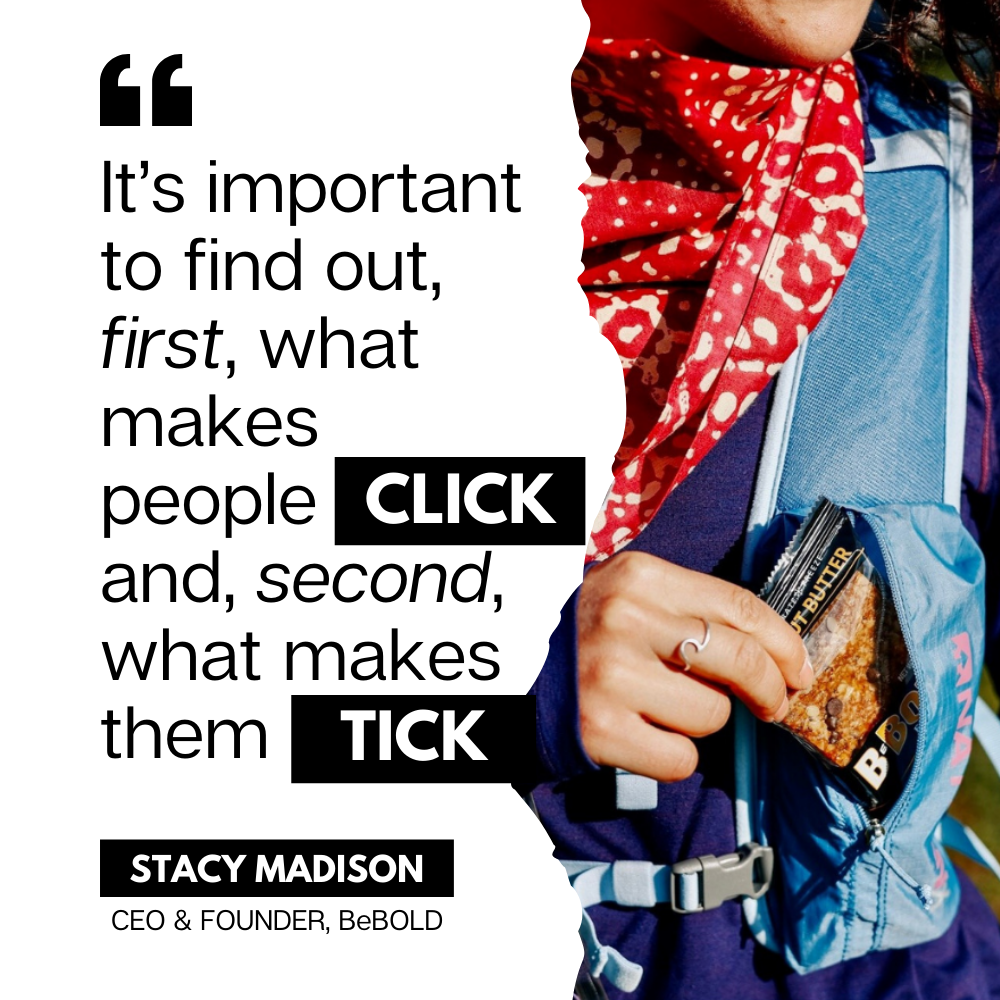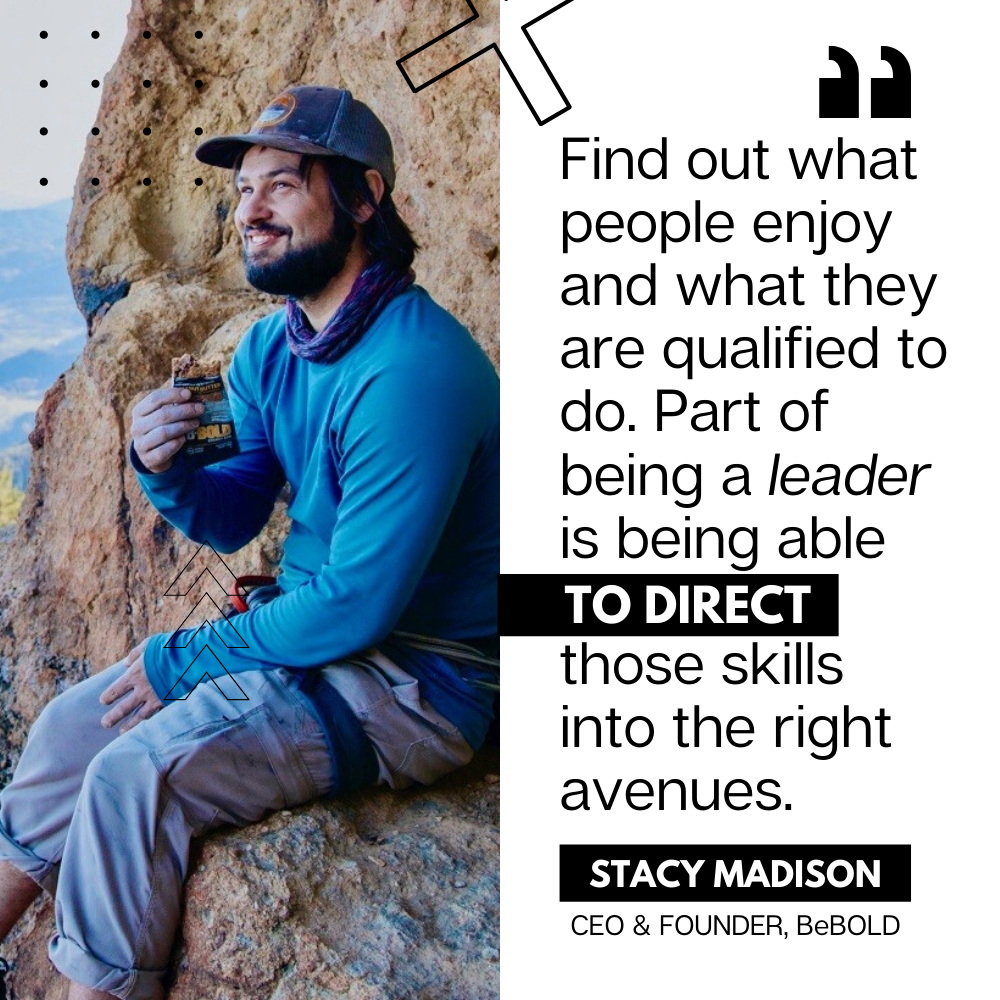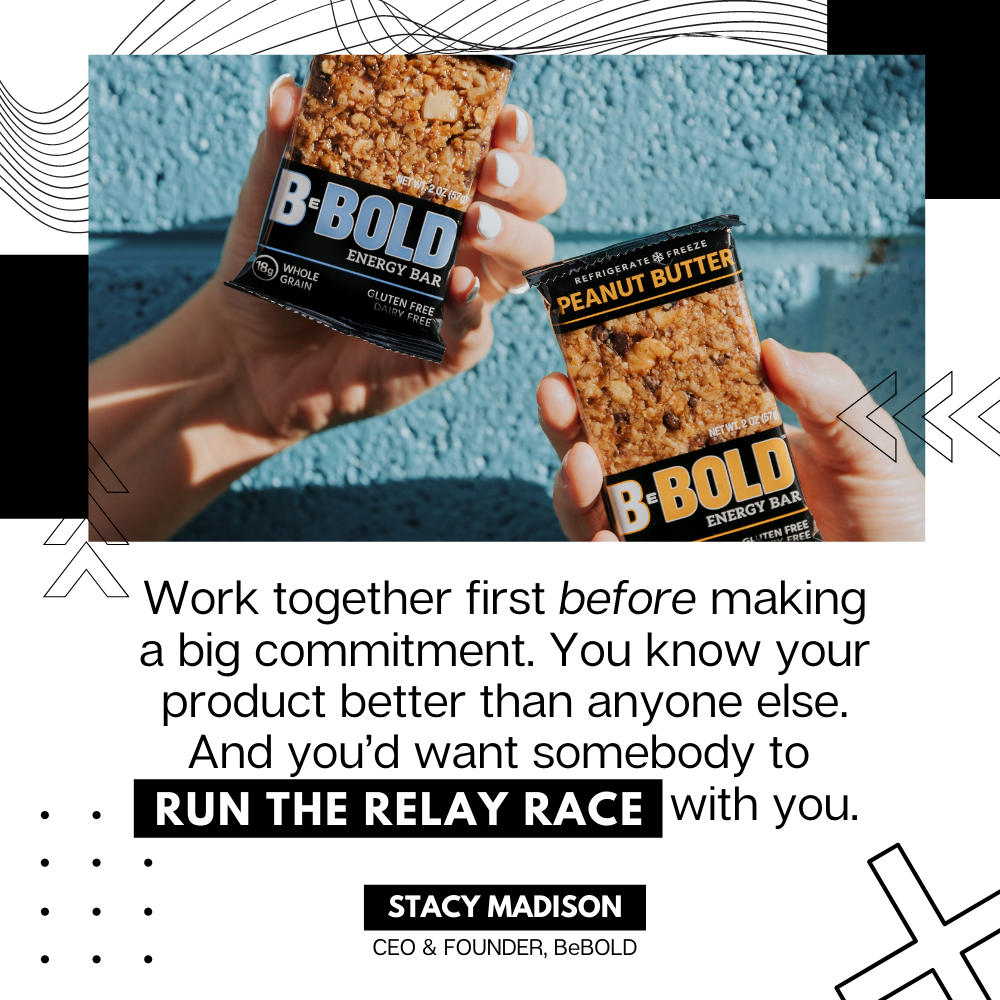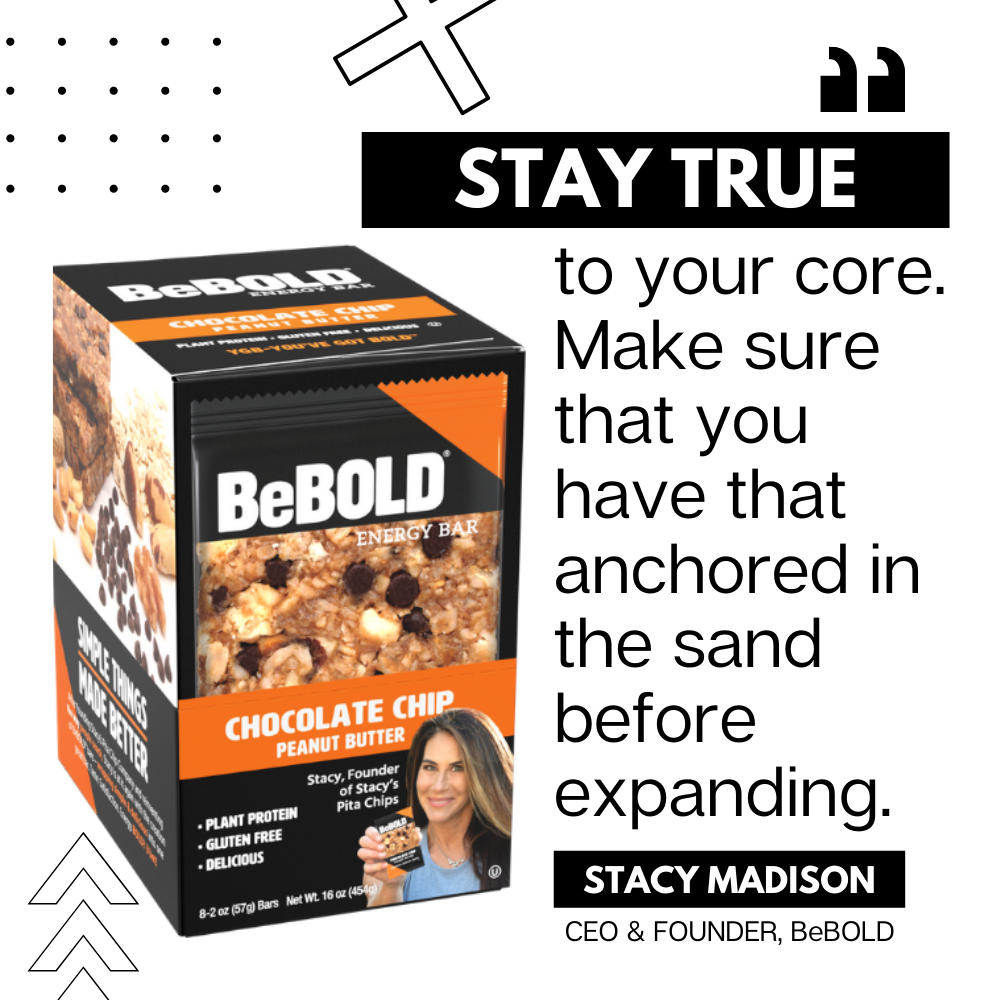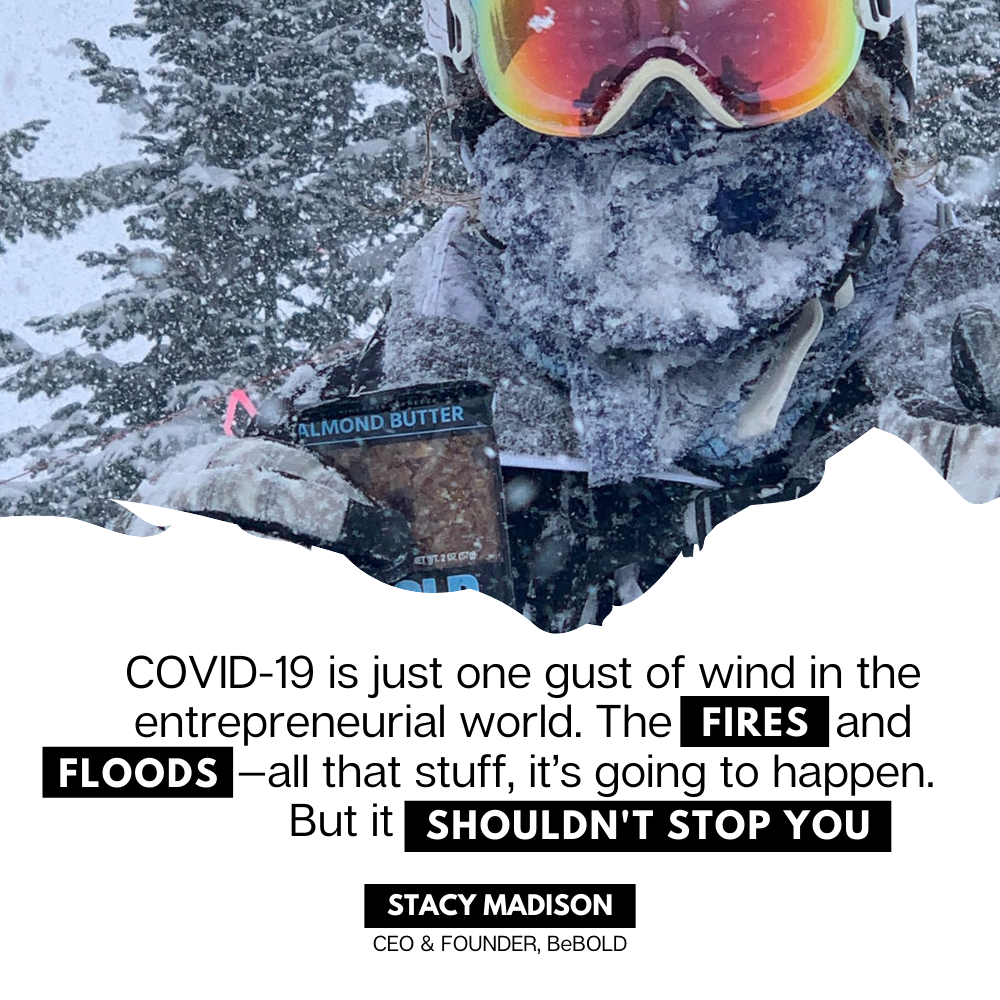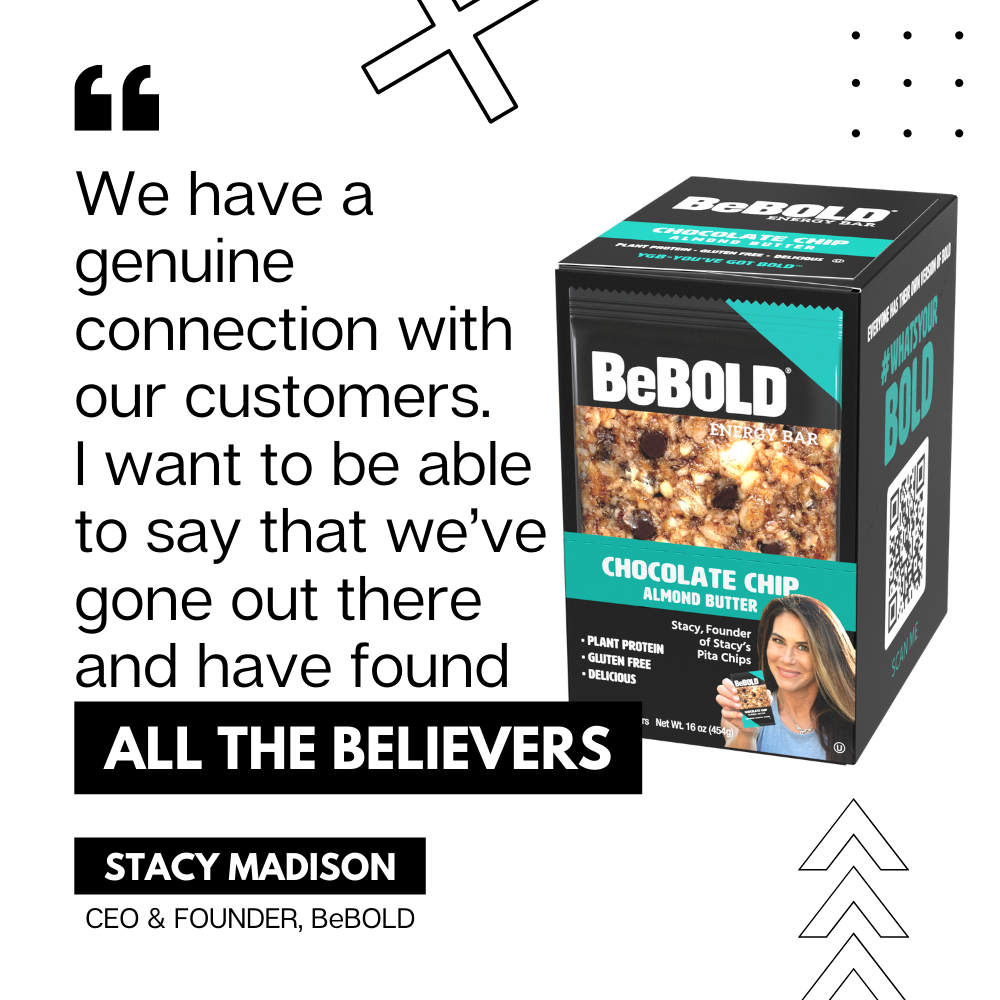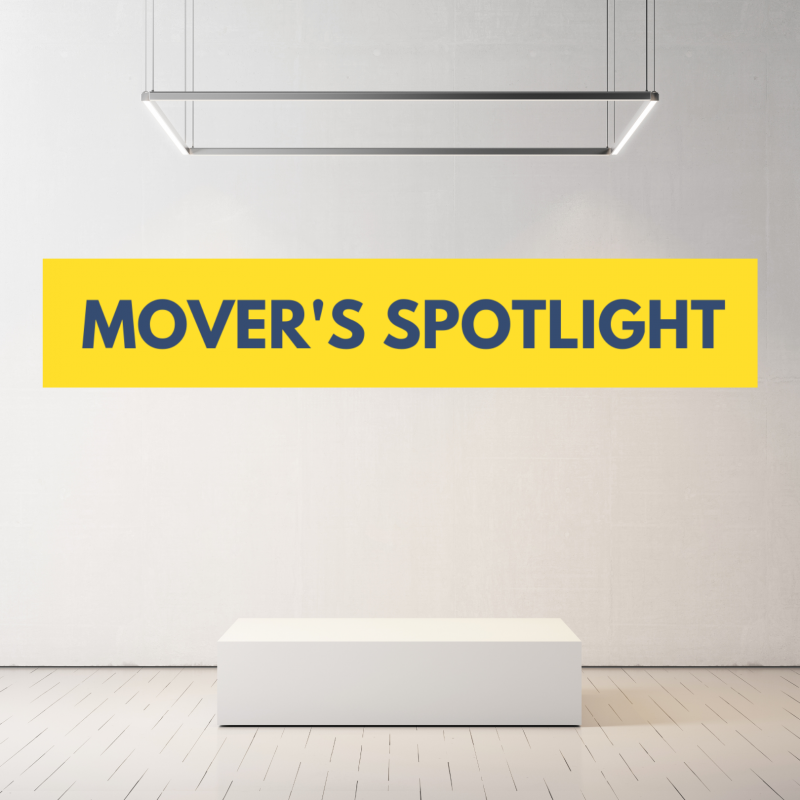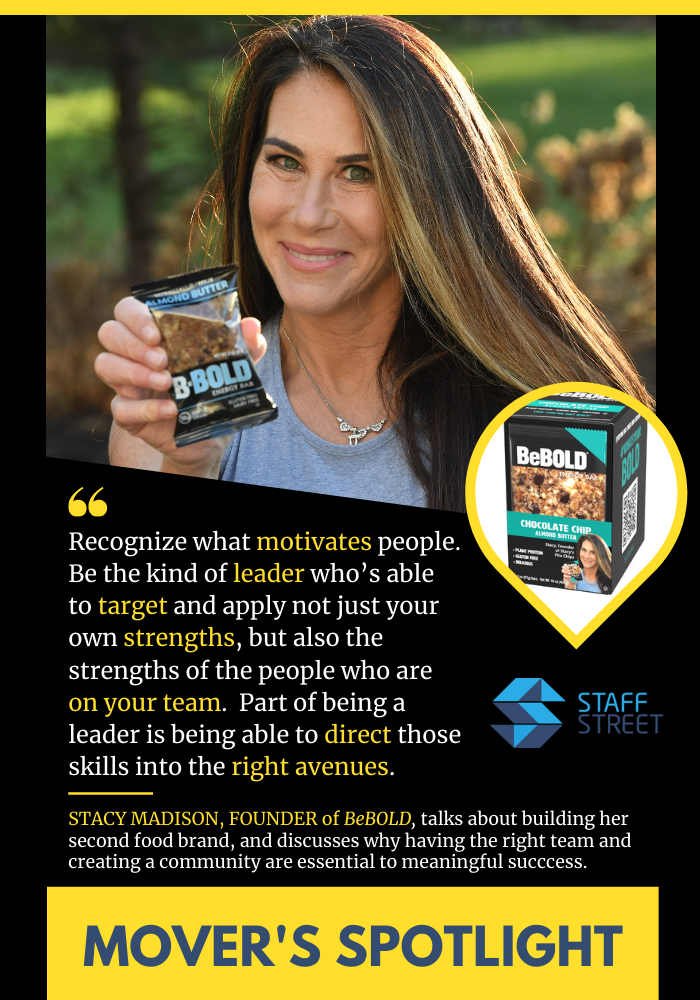

Before anything else, can you talk about the origins of BeBOLD? I know that you started it with your brother, but where did the idea come from?
Stacy Madison: BeBOLD’s story started seven or eight years ago. After the sale of Stacy’s Pita Chip Company, I traveled, did a few other things, and made some investments. Eventually, I opened my own juice bar five minutes from my house. We had juices, smoothies and salads, and we made these energy bars that sold like crazy. We sold them out of the refrigerated section. I hadn’t planned on launching another national brand. My mission with the juice bar was more community-based.
I’ve always preached, “Do what you love to do” first and foremost. That was the thought behind the juice bar. It was the same thing behind Stacy’s and, now, the same thing behind BeBOLD. It was never like, “Okay, I’m going to launch another product. I’m going to find one, develop one, buy one, and so on.” It came about organically.
So, in a way, BeBOLD Bar was incidental to the juice bar. How did it go from being sold out of the juice bar fridge to being its own brand?
Stacy Madison: I was making BeBOLD Bars for the juice bar on a small scale just as we had been making the pita chips for the food cart. My brother was instrumental at scaling Stacy’s and I really needed him to help grow BeBold if we were going to bring this product to market. He would come and sit at the juice bar and watch how every person who comes in grabs a bar—that’s all he needed to see!
After that, he was easy to bring on board. He’s really the person who brought it from “Okay, I can make these from my juice bar” to a larger scale. It took us another year to get to that point. It’s a different process. You’re no longer making them in a small commercial kitchen. Now, you’re in the manufacturing world. That was step one.
Step two was getting the right team. We reached out to people who had worked with us at Stacy’s Pita Chip Company. My brother was very adamant about it, like, “Look, this time around, we’re not bootstrapping. We’re going to start this with a budget and a team.”
We were able to launch the company a few months before the pandemic. When we first rolled out, we decided to go to our favorite. We went to Publix. It’s a huge chain of stores and it gave us one big initial push. We started “large” in that sense. But, then, the pandemic hit, and you know what happened. Regardless of where you were, unless you were Tide or Clorox or Charmin, we all found ourselves in the same boat facing the same challenges.
It’s interesting that you mentioned that you got your team from Stacy’s. Aside from your finances, what else did you do differently with BeBOLD?
With BeBOLD, we hired a COO who has a lot of experience with Quaker and with new product development. I do all of the marketing and my brother is in charge of the operational manufacturing and bringing the product to the market. We’ve built this skeletal crew with some interns from Babson University. With the Pita Chip Company, we started with all interns, who worked hard and they were smarter than we were. That’s something we learned, that it’s always nice to have fresh minds working on the team.
What does it mean to be bold and how do you distinguish the BeBOLD Bars from competitors?
Stacy Madison: Let me tell you a little bit about the bar itself. It is sold in the refrigerated section because it’s made from fresh nut butter, nuts, maple, honey—so, it’s all fresh ingredients. All we do is mix press and pack them. Even though it’s sold in the refrigerated section, you can take it with you on-the-go and it’ll stay good for up to 14 days. You can take it on hikes. You can take it camping. Things like that. It’s an all-encompassing bar.
So, the BeBOLD Bars are versatile.
Stacy Madison: A BeBOLD Bar is good by itself. If you look at what’s basically what’s in the bar, it’s everything that you would put in yogurt. That way, you can have it by itself, or crumble it up, or put it in yogurt, or have it with coffee.
A lot of people who usually eat sugar and candy bars in the afternoon would have a BeBOLD Bar in place of that and it keeps them feeling full. It also satisfies their sweet tooth. It really helps people adjust to having a healthy lifestyle. A lot of people who eat snack bars are sacrificing taste in order to get some kind of benefit. For example, a lot of bar brands put powders and syrups or things like that into the bar and consumers are like, “Well I want to get 24 grams of protein. So, I’m going to eat a bar that tastes like crap.”
So, BeBOLD really changes the way that you’re eating, because, you get protein from nuts. You can get protein from nut butter. And you don’t have to sacrifice the taste in order to get a benefit.
It’s a hard marketing message to push because everybody is saying that. That’s why we feel that as we grow the brand, we really have to get it into people’s mouths. We have to get people to try the bar because that’s how it’s going to sell. It was the same with Stacy’s Pita Chip. Nobody knew what a pita chip was. In order to compete against other snacks, we had to get all those snackers out there to try the pita chips. That’s a very important parallel with our go-to-market strategy, too.

Coming out of the pandemic, there’s no shortage of challenges to speak of. What was it like for you?
Stacy Madison: The whole pandemic has given us the opportunity to grow the BeBOLD brand in a certain direction and with the vision of the company that we really wanted. When you’re faced with a challenge, as an entrepreneur, once you get past the emotional part of it, you’re going to look at it and say, “Okay, well, how can we turn this into an opportunity?”
Like any entrepreneurial journey, it was a roller coaster. Before the pandemic, we were all, “Rah-rah, fresh out’ the gate!” We got into Publix! We’re in 1200 stores! And we were all excited. Then, the pandemic hit.
The grocery stores were just insane. It was feast or famine. They’re either packed or they’re empty. People were not there to try anything new. They’re there to buy their staples.
All the companies in the pandemic were faced with the dilemma of, “How do I make a projection? How much am I going to produce to restock the shelves?” During a pandemic, you do not know consumer behavior. There is nothing predictable about a pandemic.
How did you guys cope?
Stacy Madison: One of the things that we did was—when we got into Publix, we had produced on a normal world projection, right? But then that world had gone to hell in a handbasket and it left us with a hundred and fifty thousand bars in inventory. Fast forward to eight months later, we were still sitting on these bars. The bars still had months of shelf life left on them. They were still delicious. But we didn’t want to put them into the market because that’s a process in itself, going through distribution and using somebody else’s warehouse. And you would need months for it to get out there.
So, we could either take a hundred fifty thousand dollars in bars and throw it in the dumpster. Or we could take all of the money we would have spent on trade shows and sampling and marketing opportunities at the stores, and reinvest it. So, we reached out to Hello Fresh. That way, we were able to pivot and sell more online.
In the end, we found 150,000 people to actually try the bar. Granted, if we had been on Amazon at the time, it probably would have been a little bit more successful. Nevertheless, we got people to come to our website and become familiar with the BeBOLD brand. Now that the world is opening back up, people can go to retail stores and they’ll see it. They’ve tried it and they can buy it.
That was probably our biggest challenge. Our biggest decision was where to put in more money. I think a lot of brands probably faced a similar thing.
On the flip side, did you find surprising opportunities during the pandemic?
Stacy Madison: The pandemic did afford us the opportunity to come up with new packaging. In addition, we were able to come up with some new flavors. We changed one of the flavor names. We had Almond Butter and Peanut Butter, and now they’re called “Chocolate Chip Almond Butter” because, you know, chocolate sells. We were also able to come out with other flavors, like cashew nut butter and an almond butter-based bar that has macadamias in it to expand our product line.
Were there specific strategies that worked for you guys when it came to convincing people to actually get their hands on BeBOLD Bars?
Stacy Madison: We sent 40,000 samples down to five different hospitals in Florida, in addition to some hospitals up here in Boston. What we discovered with doing all of those donations was that it feels good to do good. Right?
One way to get through this pandemic was to help as many other people as we can. These folks work a 24 hour-cycle. Nobody’s had a day off. We send them a bar that says it’s available at such and such store. Maybe they’ll buy, maybe they won’t. Who cares? The point is, we get to make a real difference in somebody’s day. And that is what BeBOLD is about. By doing donations, the brand evolved into recognizing people for #TheirBold.
We’ve kind of started a whole hashtag going forward this year. The #WhatsYour Bold campaign. We’ve even put it on our new packaging—which is another benefit from COVID. We were able to redo our package. I’ve never a whole year to work on a package. I’m usually banging it out in two months. I had all year to work on this box and we developed the hashtag to reward those everyday heroes.

You talked about your juice bar and building it close to your community. It’s a question that we’re always interested to ask entrepreneurs: how do you connect and build a community around your brand?
Stacy Madison: Everybody says their bar tastes great and has all the benefits, right? It’s almost like that whole marketing piece has been a little bit bastardized—for a lack of a better word. The meaning has become diluted. It was the same thing with the pita chips. Every brand marketed itself as “natural”. Eventually, ‘natural’ just meant nothing.
To overcome that, we did Hello Fresh and we were able to do sampling. Sure, it’s not sampling the way we typically do it in the store where somebody is right there and can purchase it. We’ve had to pivot to social media, online sales, and direct-to-consumer.
Similarly, doing donations is a win-win-win. The hospital wins, the employee wins. We look at it as a win because we were able to get people to try the bars and potentially get hooked. Maybe even tell a friend about them. Even if they didn’t try it, they can still say, “All these BeBOLD bars showed up at the hospital,” and people would at least hear about it and become familiar with us.
Let me give you a different example.
Go ahead.
Stacy Madison: The other day, my brother was driving and somebody dinged his car. It was at the gas station and he was just filling up his tank. He wasn’t even in it. Somebody just clipped his car and this other guy comes up to my brother and says, “Look, if you need a witness, I saw that whole thing happen. I’m happy to let whoever know that you didn’t do anything. Here’s my license.”
So, my brothers took a picture of it. He thought it was super nice of him to stop and just be there, out of the blue. He ended up sending the guy some bars and a little thank you note that said, “Thank you for stopping. Everything worked out all right.” In this day and age, it’s really nice that somebody went out of their way to do something nice for somebody else. That is real. That’s what we call bold. And that’s what it’s all about.
We received a really nice follow-up letter from a woman who is the head of a rehab facility. Apparently, this guy is three years off his drug addiction. And in the facility where he lives, that’s part of their recovery. They were proud of him and thanked us for recognizing him because this is what it’s all about. That’s what we want to do with our #WhatsYourBOLD campaign, to celebrate similar stories. We want it to be more than just eating a bar. We want to spread that positivity and encourage people to build connections with one another.
That’s an incredible story. I read recently about how being an entrepreneur is one of the most creative ways to bring people together. It’s important to connect with people beyond what is purely transactional and just show up when somebody needs you to be there.
Stacy Madison: I believe in random acts of kindness. Whenever I go through a toll booth, I pay an extra dollar for the car behind me. It always ends with the person speeding up and going honk honk. Maybe that person was having a bad day. Then all of a sudden the toll booth operator tells them, “That person in front just paid for you.” It’s the little things like that that will hopefully spread. There’s been so much negativity these past few years. I’ve gotten dysfunctionally upset about many of the things going on against women, the Asian community, the black community. The world needs a pick-me-up.

As we come out of the pandemic, connecting and generating that sense of community feels important. And that brings me to my next question. As a staffing agency, we’re really focused on learning about building and leading organizations. For you personally, what is the most important thing you’ve learned as an entrepreneur and as a leader?
Stacy Madison: At BeBOLD, we have the advantage of working with people who had worked with us previously at Stacy’s Pita Chip Company. But normally, when you’re building a team, it’s important to find out, first, what makes people click and, second, what makes them tick.
And then, you have to find out what makes them tick. For example, there was this one woman who worked for us at Stacy’s Pita Chip Company. She was working for Nokia before us. She loved teaching her yoga class on Tuesday afternoons. But when Nokia expanded, that was one of the things that she lost. So, she went out looking for another job.
Being a small company, being able to recognize what motivates people, it was clear to us that it was more important for her to have that Tuesday afternoon doing yoga with her kids. So, in the end, we got a great person who we couldn’t afford. But you know what? We can afford to give her Tuesday afternoon off. I think that’s really important. When you’re building your team, find out what makes them click and what makes them tick.
That’s really great advice.
Stacy Madison: You also asked what’s the most important thing that I’ve learned as a leader. I would say, “Don’t take yourself too seriously.” I know that sounds like lame advice, but it really goes a long way, especially when there’s a bit of pressure.
Apart from that, you have to be the kind of leader who’s able to target and apply not just your own strengths, but also the strengths of the people who are on your team. For example, my strength might be in some of the marketing stuff. Our COO has a background in new product development. For us to just let her run the company without tapping into the fact that she can bring a new product to market faster than anybody else is crazy. She can solve manufacturing problems and do so much more.
You have to find out what people enjoy and what they are qualified to do. Part of being a leader is being able to direct those skills into the right avenues.
Hopping off what you said, in your years of experience being an entrepreneur, how do you make sure that everybody is on the same page when it comes to the vision for the company?
Stacy Madison: That’s where the first window of time helps. You need to work together first before making a big commitment. If people didn’t have the same vision, they wouldn’t be here.
From experience, I would take a person from a small company, someone who has had to put out more fires, over somebody coming from a large global company. With the latter, our needs as a company will not always match what they’ve done. That was an important lesson for our hiring process. We thought that if we could get some big wig to join the team, it would be more beneficial for us. They would lead the way.
But, ultimately, you know your product better than anyone else. You know your budget and the kind of hurdles that you’re gonna face. And you’d want somebody to run the relay race with you.

You’ve built two brands now. You talk about connecting with people on a genuine level and distinguishing yourself from other brands. What are the things you need to keep in mind to last in this category?
Stacy Madison: That’s the magic question, right? I mean, if we could all answer that then we got it made (laughs). But I’ll give you my best guess from experience. For most companies, I would say, “Solidify your anchor before expanding.”
For us, we’re going from two flavors to five flavors. BeBOLD is in the refrigerated section. We’re not launching seven million other things that you would find in our section. It was the same with Stacy’s Pita Chips. We focused on the pita chips and the expansion of the pita chips. Stay true to your core. Make sure that you have that anchored in the sand.
Think of it as an umbrella on the beach. Gusts of wind are going to constantly come down trying to rip you out of the sand and blow your umbrella away. But you have to concentrate on keeping that core before you move on to other things.
We were all delayed because of COVID-19. But even that’s just one gust of wind that you’re going to face in the entrepreneurial world, and it shouldn’t stop you. The fires and floods, all that stuff, it’s going to happen. If anything, it makes you look at yourself and see that you, too, can be an expert in crisis management.
Speaking of crisis management and COVID, how has your 2020 experience changed your approach and strategy as you move forward with BeBOLD?
Stacy Madison: Learning how to be more directly in touch with our consumers. When you have your name on the bag of a pita chip, it’s one way to be in touch with your consumers, right? They want to talk to Stacy because they know that who the brand is about. But my name is not on BeBOLD, so we’re trying to find ways to get the same message across. It’s why I’m on the front of the box. It also says that “BeBOLD is made by the founders of Stacy’s Pita Chip Company” because there’s trust in that brand. People need to know they can trust this brand, too. BeBOLD has that same integrity.
If you could ask any entrepreneur anything, someone that you admire or who inspires you, who would that be and what would you ask them?
Stacy Madison: Oh God, there are so many! It’s funny because I’ve gone from hundreds to millions. Someone might ask me, “How do you get from a couple hundred thousand to crossing that million-dollar mark?” and then I might turn around the other way and ask somebody else, “How do you go from a million to a billion?” Especially now, seeing so many women out there who have built billion-dollar brands. So, for me, I would look to those people for advice—and not just the women.
I’d talk to Hamdi Ulukaya, the CEO of Chobani yogurt. He’s from a family of Turkish immigrants. He built a yogurt brand and now he’s in the coffee business. I would ask him, “How do you effectively juggle so many balls successfully in the air?”
Like, I have a team that I can trust. I have no problem with delegating work. But there are so many people who see things larger than I do. I would love to sit down, have coffee and dinner with somebody like Hamdi Ulukaya. Pick his brain. I would love to talk to Michelle Obama. I mean, look at all the amazing changes they’ve made. I want to know how they get things done and still have time for their families.
You mentioned expanding BeBOLD from two flavors to five. Are there other projects that you’re looking forward to this year?
I would like to be bigger than Nature’s Valley in the sense that we have a genuine connection with our customers. I want to be able to say that we’ve gone out there and have found all believers. You’re not going to get that with a big brand like them.
Do you think that there’s a limit or a golden threshold of connecting authentically with your audience as you become bigger?
Stacy Madison: I think it can still be done, just on a bigger level. That’s one thing that Stacy’s has done really well. We connected extremely well with our customers.
Before we sold Stacy’s, it had a program that was run by an intern. It was called Chipping In. It was our philanthropic mission. Sometimes, we had bags that were underweight or overweight. We donated them. We would go through a vetting process before we did the donation to make sure that it was going to be a win-win situation. But after we sold the company that program got discontinued. I think by taking that away, they had a few years of stumbling along.
But over the last decade, they’ve started to reconnect with their customers through the Stacy’s Rise program. The program has helped so many other businesses grow. It’s helping hundreds of women’s businesses and, as a result, a handful of them have become successful.
I truly believe that you can take that same connection and do it on a larger level. I don’t think you have to lose that.
